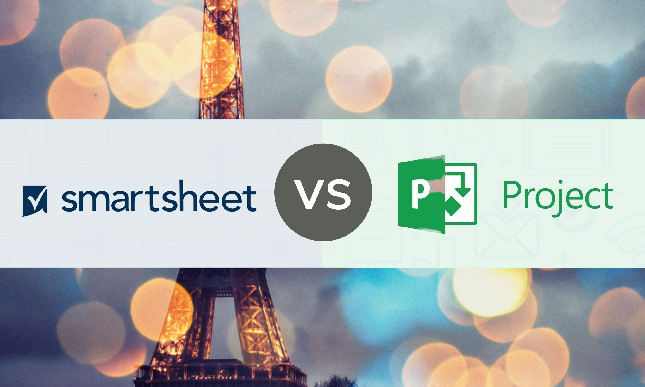Microsoft Project vs. Smartsheet vs. Teamhood: Which is better?

Without a doubt, Microsoft Project and Smartsheet are options we take into consideration when considering project management tools. If you’re using this kind of tooling for the first time, it could be difficult to understand how they differ and where each shines.
This article examines the differences between Microsoft Project, Smartheet, and Teamhood—a recent addition to the project management software market—and determines which use cases each is best suited for. This comparison has been broken up into sections based on features (task management, project management, collaboration, etc.) to make it easier to read. which each has a table that compares the three tools available in that field.
Let’s see which of these solutions you might find most appealing without further ado.
Overview of Microsoft Project, Smartsheet, and Teamhood
Let’s start this overview by becoming more acquainted with each individual tool. The following are their succinct summaries, which offer a great overview of each solution and their market positioning.
- An enterprise solution for managing projects and portfolios is Microsoft Project.
- For large teams or projects, Smartsheet is an enterprise work management tool.
- For high-achieving teams, Teamhood is a Kanban-first project management tool.
Although there are some differences between the three descriptions, work and project management are a common theme among all three solutions. It appears that the goal of each of these tools is to enhance and simplify the management of your processes. Let’s examine these tools’ appearances in several categories.
Kanban Implementation: Microsoft Project vs. Smartsheet vs. Teamhood
Agile project management has been popular for some time, and many teams are searching for tools that facilitate Kanban board visualization. Let’s investigate the possibilities that these three solutions offer.
- Although Microsoft Project is a more conventionally oriented project management tool, it does provide a Kanban view for item visualization. Several statuses (columns) can be used to represent your process steps in this view.
- Its Kanban view is very similar to that of Smartsheet. Different statuses can also be used to alter this Kanban board, but those wishing to apply the practice won’t find any WIP limits or other Kaban features.
- In contrast, Teamhood provides a fully functional Kanban board. With the aid of specific Agile metrics, you will be able to limit the work using WIP limits, alter the view with statuses, sub-statuses, and swimlanes, and monitor progress.
This is a summary of the three tools’ Kanban-related features.
| Kanban Board | ✅ | ✅ | ✅ |
| Statuses | ✅ | ✅ | ✅ |
| Sub-Statuses | ✅ | ||
| Kanban Swimlanes | ✅ | ||
| WIP Limits | ✅ | ||
| WIP Limits for Swimlanes | ✅ | ||
| Commitment Points | ✅ | ||
| Lead & Cycle Time | ✅ | ||
| Agile Metrics | ✅ | ||
| Synced Cards | ✅ |
Comparison of Microsoft Project, Smartsheet, and Teamhood: Cooperation
Collaboration features are crucial because they facilitate easier communication and enable more efficient operations. These are the characteristics of the tools that were discussed.
- Basically, Microsoft Project provides all the features you would anticipate from a tool of its kind. You can review the data in the workload view, change user access through roles, and interact with other team members through comments.
- A comparable set of features is offered by Smartsheet. enabling you to communicate in the task detail section, evaluate all items on a calendar, and add outside parties as guest users. Since this solution does not include the workload view, it may be more challenging to comprehend the workload of your team members.
- In addition to adding a few new features, Teamhood has all the same features as Microsoft Project. You can specify each team member’s availability and hourly rate in the workload view. Planning and cost estimates become considerably more accurate as a result. Additionally, you can benefit from the business intelligence feature, which makes recommendations for new tasks based on its analysis of your previous work.
| Microsoft Project | Smartsheet | Teamhood | |
| Comments & Mentions | ✅ | ✅ | ✅ |
| Notifications | ✅ | ✅ | ✅ |
| Team Roles | ✅ | ✅ | ✅ |
| Guest Users | ✅ | ✅ | ✅ |
| Calendar View | ✅ | ✅ | ✅ |
| Workload View | ✅ | ✅ | |
| Custom Work Hours & Hourly Rate | ✅ | ||
| Board Mailboxes | ✅ | ||
| Auto-Estimations | ✅ |
Task Management: Microsoft Project, Smartsheet, and Teamhood
For most of us, task management is a daily routine. Effective planning, delegation, and execution are required. Here’s how these fixes can be useful.
- You can choose from a good selection of features in Microsoft Project. Tasks can be broken down into child tasks, assigned to one or more team members, and customized with dependencies, deadlines, and other pertinent details. Additionally, you will be able to save time when creating new tasks by creating task templates for the items that are used the most frequently.
- And when it comes to task management features, Smartsheet is not holding back. To make sure crucial tasks are not overlooked, you can mark Smartsheet dependencies, create tasks and subtasks, and set up recurring items. To keep your team in sync, you can include critical information in the task details.
- The first two tools are very similar to teamhood. This is where you can use bulk actions to manage one or more tasks. For the purpose of keeping track of significant items that are not assigned to you, you can also make synchronized copies of your tasks in multiple boards and add yourself as a task watcher.
| Microsoft Project | Smartsheet | Teamhood | |
| Child Tasks | ✅ | ✅ | ✅ |
| Task Assignments | ✅ | ✅ | ✅ |
| Multiple Task Assignees | ✅ | ✅ | ✅ |
| Task Watchers | ✅ | ||
| Due Dates | ✅ | ✅ | ✅ |
| Dependencies | ✅ | ✅ | ✅ |
| Recurring Tasks | ✅ | ✅ | ✅ |
| Task Templates | ✅ | ✅ | |
| Tags | ✅ | ✅ | ✅ |
| Bulk Actions | ✅ | ✅ | ✅ |
| Synchronized Copies | ✅ | ||
| Timeline View | ✅ | ✅ | ✅ |
| Workload View | ✅ | ✅ |
Project management options include Microsoft Project, Smartsheet, and Teamhood.
These three tools are centered around features related to project management. This is how each project can be optimized.
- One tool that focuses on conventional project management techniques is Microsoft Project. As a result, a Gantt chart with baselines, an overview of the portfolio, budget monitoring, and additional automated reports are available. All of this will enable you to assess the outcomes and get a general idea of the project’s plans.
- The project management tools in Smartsheet and MS Project are extremely comparable. This tool, which resembles a grid, allows you to analyze the data that is most crucial to your efforts with custom dashboards, Gantt, portfolio, and timeline views.
- The project management tools in Teamhood are identical to those in the preceding two solutions. Additionally, two new features are visible here: automated dependency rescheduling and earned value tracking. enabling you to make more precise plans and gain deeper insights into your efforts.
| Microsoft Project | Smartsheet | Teamhood | |
| Gantt Chart | ✅ | ✅ | ✅ |
| Baseline & Baseline Comparison | ✅ | ✅ | ✅ |
| Portfolio Overview | ✅ | ✅ | ✅ |
| Timeline View | ✅ | ✅ | ✅ |
| Project Templates | ✅ | ✅ | ✅ |
| Time Tracking | ✅ | ✅ | ✅ |
| Budget & Cost Tracking | ✅ | ✅ | ✅ |
| Custom Dashboards | ✅ | ✅ | |
| Automated Reporting | ✅ | ✅ | ✅ |
| Earned Value Management | ✅ | ||
| Dependency Auto-Rescheduling | ✅ |
Information management: Microsoft Project versus Smartsheet versus Teamhood
Any project has a ton of information after it. In each solution, you can handle it as follows.
- You will be able to attach relevant files and documents to the tasks themselves in Microsoft Project. facilitating information sharing and communication as a result.
- There is a document builder feature in Smartsheet. Here, you can use information from your workspace to create documents, which can then be signed by team members directly within the tool. Another option is to make a wiki on Smartsheet.
- With the help of Teamhood’s integrated Pages feature, you can produce wiki-style documents directly within the workspace. After that, you can further classify them and organize the data for your project.
| Microsoft Project | Smartsheet | Teamhood | |
| Wiki Pages/Documents | ✅ | ✅ | |
| File Sharing | ✅ | ✅ | ✅ |
| Idea Management | ✅ | ✅ | ✅ |
| Document Classification | ✅ | ✅ |
Comparing Microsoft Project, Smartsheet, and Teamhood: Which Is Better for Business?
Now that we have compared Microsoft Project, Smartsheet, Teamhood, and more, let’s wrap it up by identifying which company would profit from each tool the most.
- For a large business that wishes to continue using conventional project management techniques, Microsoft Project is a useful tool. It works in a linear fashion and is appropriate for companies that do the same. Although there is a Kanban view available, people who want to put the practice into practice will quickly discover that it is insufficiently flexible and functional.
- While Smartsheet is an enterprise tool as well, its main advantage is its capacity for managing massive data sets. You can add a lot of entries to this Excel-like solution and then analyze them to help you decide what steps to take next for your business.
- For small to medium-sized businesses that prefer to plan and operate in a visual environment, Teamhood is a project management solution. Teams and management can combine their processes into a single tool thanks to the thoughtful combination of traditional project management features (such as Gantt charts) and Kanban methodology.

